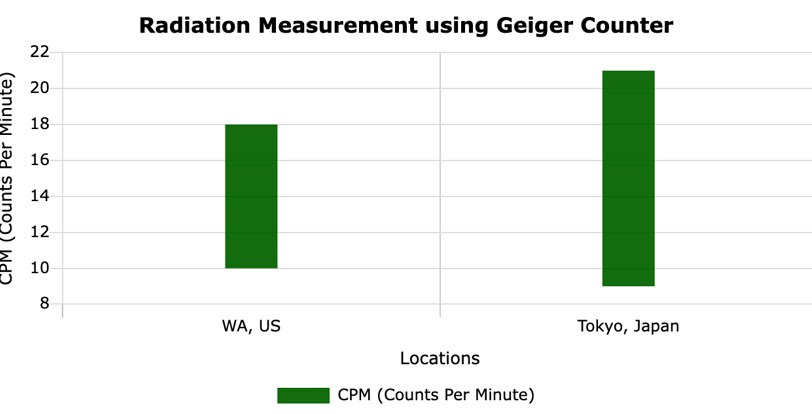Troubled Waters: How Fukushima's Nuclear Waste Affects the Environment
Latest update with in-person visit to Japan to uncover the Environmental Impact of the Fukushima Nuclear Incident
SITE VISIT


The Begin - 2011
On March 11, 2011, Japan faced one of the most devastating natural disasters in its history. A massive 9.0 magnitude earthquake, the most powerful ever recorded in Japan, struck off the northeastern coast, triggering a catastrophic tsunami with waves reaching heights of up to 40 meters
The earthquake's epicenter, located in the Pacific Ocean, approximately 70 kilometers east of the Oshika Peninsula of Tōhoku, caused severe ground shaking in northeastern Japan. The Fukushima Daiichi Nuclear Power Plant, operated by the Tokyo Electric Power Company (TEPCO), experienced the full brunt of this seismic activity.
The power plant's critical infrastructure was severely damaged by the tsunami. Most significantly, it led to the failure of the cooling systems necessary to keep the nuclear reactors from overheating. This led to meltdowns in three of the plant's six nuclear reactors.
The environmental impact of the Fukushima disaster has been profound and long-lasting. Radioactive material released into the Pacific Ocean has had far-reaching effects on marine life, and the extent of these impacts is still being studied.
Nuclear Wastewater
In the wake of the disaster, cooling the damaged reactors became an immediate necessity to prevent further meltdowns. This process involved pumping vast amounts of water into the reactors. However, this emergency measure led to the accumulation of over a million tons of contaminated water, as the water became radioactive upon contact with the damaged reactor cores.
To manage this, TEPCO, the plant's operator, has used an advanced treatment system known as ALPS (Advanced Liquid Processing System) to remove most of the radioactive contaminants from this water. Despite this, the treated water retains tritium, a radioactive isotope of hydrogen, which cannot be removed with existing technology. Tritium emits weak radiation and is considered relatively harmless in small quantities, but the sheer volume of tritiated water at Fukushima presents a unique challenge.
Storing this treated water has become increasingly problematic. The storage tanks at the plant are reaching their capacity, leading to difficult decisions about the future of this water. One proposed solution, strongly debated both domestically and internationally, is the controlled release of the treated water into the Pacific Ocean.
Actual Measurements in Tokyo
During a recent site visit to Tokyo, Japan, members of the SKYRIVER Foundation embarked on a mission to assess the current radiation levels in the region, particularly in light of the lingering concerns post the Fukushima Daiichi nuclear disaster of 2011. Equipped with a Geiger Counter, a device used to measure ionizing radiation, the team meticulously monitored the ambient radiation levels throughout their visit. The findings from this exercise offered an enlightening perspective on the current environmental state of Tokyo, especially in comparison to radiation levels typically found in the United States.
A Geiger counter detects and measures radiation by counting the number of radioactive particles detected over a period of time. The readings from Tokyo were anticipated with a mix of curiosity and concern, considering it is Japan's largest metropolitan area near Fukushima.


Surprisingly, the results of the measurements taken throughout Tokyo did not indicate a significant increase in radiation levels compared to those commonly found in various parts of the United States. This finding is not only reassuring but also indicative of the successful efforts undertaken by the Japanese government and international agencies in managing the aftermath of the Fukushima incident. It reflects the effectiveness of the cleanup and containment measures implemented in and around the affected areas.
These results are particularly significant for the SKYRIVER Foundation, whose commitment to environmental safety and public health is paramount. The data gathered will inform their ongoing research and advocacy efforts in the field of environmental safety and nuclear radiation.
Bottom Line
While the recent findings from Japan offer a measure of reassurance, they should not lead to a reduction in vigilance. Instead, they should reinforce the importance of continuous, meticulous monitoring of nuclear wastewater's impact on the environment.
Your contribution, whether large or small, supports this vital work. Together, we can navigate the intricate balance between harnessing nuclear energy and preserving the ecological health of our planet for current and future generations. We invite you to join us in this crucial endeavor by contributing to our mission. Your support makes a world of difference.
Invest in our Future
Join us in securing a sustainable tomorrow by investing in our mission. Your contribution fuels our efforts to protect the environment, educate communities, and drive tangible change. Every donation paves the way for a brighter future, fostering innovation, conservation, and a thriving planet for generations to come.


